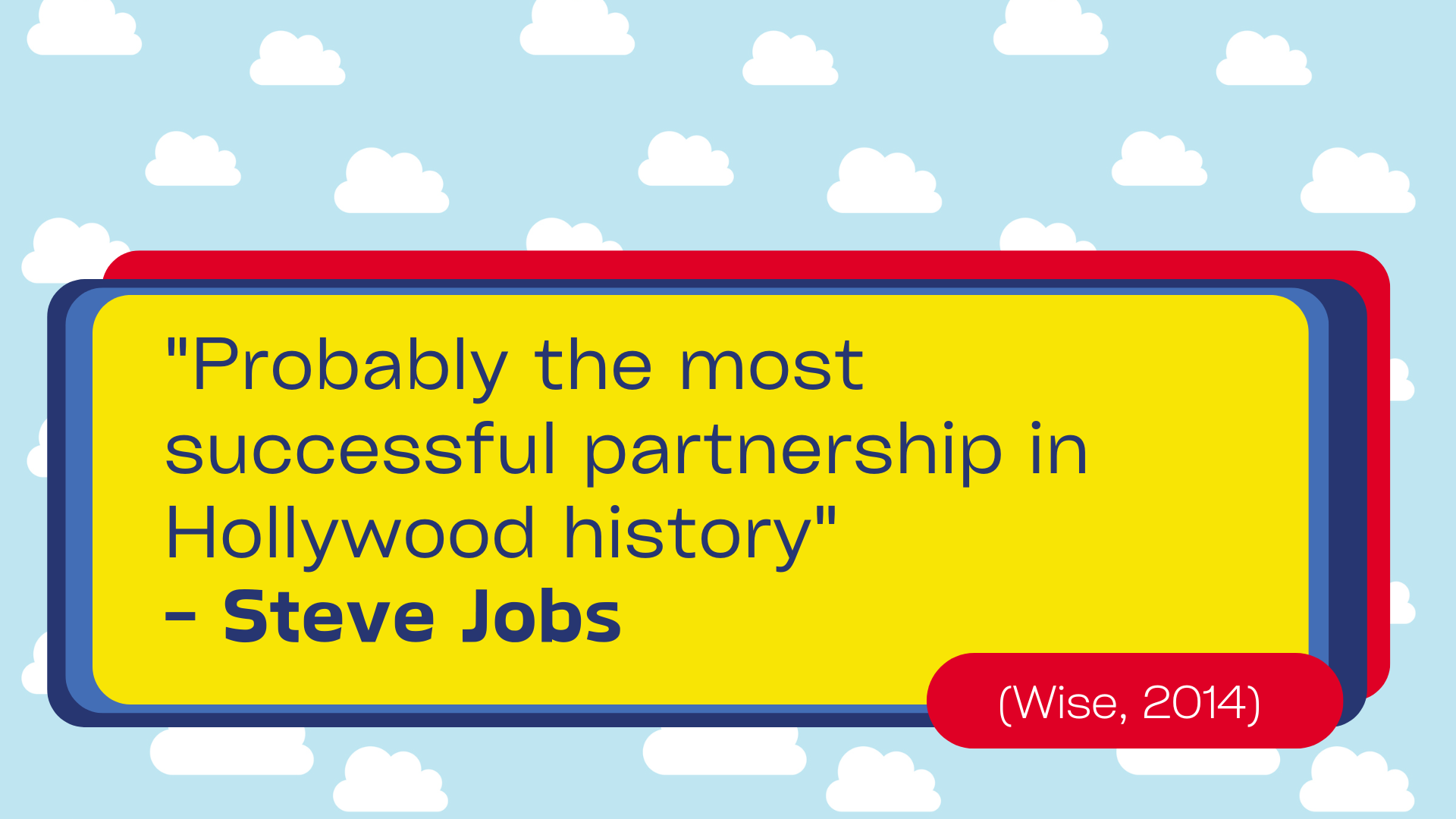
Disney gave the film an official green light on January 19, 1993 (Lasseter et al., 2010). Although biographers differ on how much blame for Pixar's story issues should go to Jeffrey Katzenberg, the Disney executive wanted a movie that appealed to both adults and children (Wise, 2014). Nevertheless, Lasseter and his team made their characters meaner and darker with every version.
Walt Disney Feature Animation president Peter Schneider abruptly halted production after Pixar delivered Disney a draft of the movie (Lasseter et al., 2010). In order to avoid having to terminate the whole Pixar production staff and have the Disney studio create the movie alone, Lasseter then requested that Disney hold off on making any changes to the script convincing Disney that Pixar could provide a better script (Lasseter et al., 2010). While the film's script was being revised, Pixar was able to survive the halt by relying on its already-established television advertisement business.
“Let’s just make the movie we want to make. We’ll listen to their notes, but let’s only take the ones we feel make the movie better and ignore the rest.” Lasseter claims he said to his team (Wise, 2014). To keep their studio alive they recreated the first third of the film from the ground up. Though it was not flawless, the updated version gave the studio confidence in the project's value (Wise, 2014). Instead of being the "sarcastic jerk" he had been, Woody became a more likeable character (Pixar Wiki, n.d.; Lasseter et al., 2010).
Katzenberg started up again with production in 1994 (Lasseter et al., 2010). However, he felt that the term "Toy" might put off an adult audience, thus he objected to Toy Story as the movie's title. Conflicts with then-CEO Michael Eisner caused Jeffrey Katzenberg to leave Disney, and his replacement did not object to the use of the Toy Story title (Lasseter et al., 2010).
Toy Story premiered in November 1995 and was an instant hit. However, because its development had taken four years, it would be challenging for a company to continue introducing one single movie every four years. Additionally, Disney also received a larger amount of power and most of the profits because they had supplied the majority of the funding for Toy Story. Jobs desired an equal distribution of power and decision-making, which is why he wanted the company to become public. (Wise, 2014).
A week after the film's premiere, Pixar went public, raising $140 million in the year's largest initial public offering (IPO) (Alcacer et al., 2010). Therefore, Jobs was able to secure a 50/50 partnership with Disney. Disney and Pixar agreed to split the costs and profits of Pixar's upcoming five feature films under this contract (Wise, 2014).
According to Lasseter et al. (2010), Toy Story represents an influential moment in the history of cartoons. Among film studios, Pixar stood out for producing an ongoing series of box office successes. Each of its first five feature-length films brought in more than $350 million. Since Disney's premiere of Snow in 1937, Jobs claims that "everyone has tried to break into the animation market.", claiming Disney and Pixar are the only two companies that have created a blockbuster production that has made more than $100 million to date (Alcacer et al., 2010).
